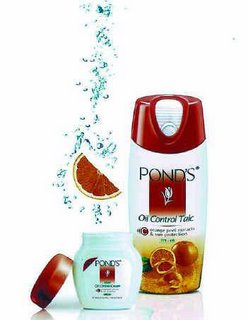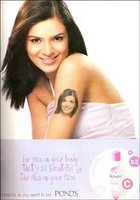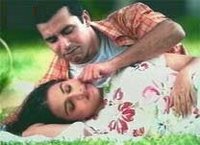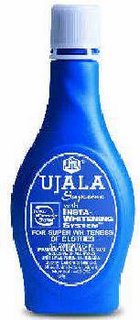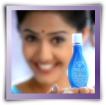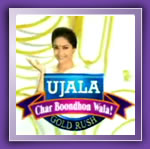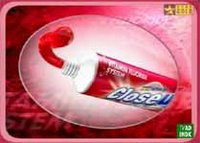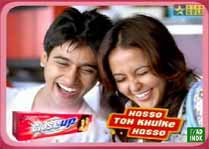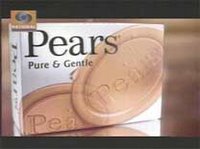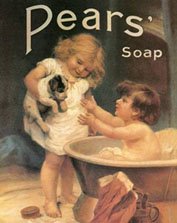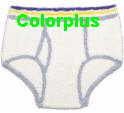 In my earlier blogs I have praised Colorplus owners ( Raymonds) for their careful brand strategy and execution. I have in that blog wished that Raymonds will not mess up that brand. Seeing today's newspaper, I got the shock of my life , an ad of Colorplus Underwear. One of the best Brand Extensions I have ever seen in my life !!!
In my earlier blogs I have praised Colorplus owners ( Raymonds) for their careful brand strategy and execution. I have in that blog wished that Raymonds will not mess up that brand. Seeing today's newspaper, I got the shock of my life , an ad of Colorplus Underwear. One of the best Brand Extensions I have ever seen in my life !!!Let us see the rationale behind this wonderful extension. Colorplus is a respected brand in the premium menswear category. Men wear underwear. So men in the premium segment wear Premium Underwear. So why not launch a Premium Underwear ?. And since Colorplus is a premium brand, why not launch a Colorplus underwear?
Will
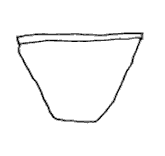 it dilute the mother brand? No yaar, it is premium isn't it? Underwear always add value to the premium image of the brand. Oops !!!
it dilute the mother brand? No yaar, it is premium isn't it? Underwear always add value to the premium image of the brand. Oops !!!Can it be called a backward integration ? May be a better word will be "undergration".
Well! enough of criticism! I thought I will do some research to find out why such a drastic move from Colorplus.
Well! enough of criticism! I thought I will do some research to find out why such a drastic move from Colorplus.
Hold your breath !
The Indian men's Innerwear market is worth around Rs 2500 crore ( I am also surprised!). The market is dominated by local and regional players. The organized branded innerwear market is estimated to be around Rs 750 crores. The premium innerwear market is worth Rs 120-150 crore.More interestingly this is a market which is witnessing a double digit growth.
No wonder ColorPlus is caught "Pants down"
The men's innerwear market is dominated by VIP with over 20% market share. The brand has been there for long and has established itself across the segments. Recently there has been lot of activity in the premium segment of the market.
2004 saw the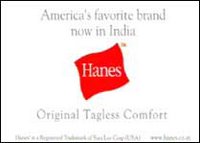 launch of Hanes innerwear in the Indian market.Hanes is a 105 years old global brand which is worth around $2.2 Billion. The brand is launched in India by Sara Lee India Ltd. Hanes has targeted itself with "original Tagless Comfort". The emphasis on "Tagless " comes from the global research which showed that 2 out of 3 men are irritated by the tags in the innerwear. The brand is launched in India with some smart advertising from Mccann.
launch of Hanes innerwear in the Indian market.Hanes is a 105 years old global brand which is worth around $2.2 Billion. The brand is launched in India by Sara Lee India Ltd. Hanes has targeted itself with "original Tagless Comfort". The emphasis on "Tagless " comes from the global research which showed that 2 out of 3 men are irritated by the tags in the innerwear. The brand is launched in India with some smart advertising from Mccann.
 launch of Hanes innerwear in the Indian market.Hanes is a 105 years old global brand which is worth around $2.2 Billion. The brand is launched in India by Sara Lee India Ltd. Hanes has targeted itself with "original Tagless Comfort". The emphasis on "Tagless " comes from the global research which showed that 2 out of 3 men are irritated by the tags in the innerwear. The brand is launched in India with some smart advertising from Mccann.
launch of Hanes innerwear in the Indian market.Hanes is a 105 years old global brand which is worth around $2.2 Billion. The brand is launched in India by Sara Lee India Ltd. Hanes has targeted itself with "original Tagless Comfort". The emphasis on "Tagless " comes from the global research which showed that 2 out of 3 men are irritated by the tags in the innerwear. The brand is launched in India with some smart advertising from Mccann.Another major player is the 125 years old global brand Jockey which has around 25% share in the premium segment of the market. This year also saw the Vanheusen brand from Madura Garments "Undergrating "to Underwears
But should you launch such innerwear through an extension?. This is a big market with a potential for a new brand. 2500 crore is a huge market. Why not a new brand exclusively for innerwear like VIP? Why should a Brand like Colorplus be diluted by a half hearted move in a new segment?
See the distribution dilemma that the brand will face .
To have a large market share , the ColorPlus innerwear has to be in all the shops that sell innerwears, that include small textile shops. If the company decides on an intensive distribution, then this premium brand will be visible to the customer in non premium outlets thus diluting the premium image and the exclusivity.
Again if the brand is restricted to select outlets, then the volume will not justify the brand extension, because convenience of purchase is an important criterion in this segment since the value of the product is low.Customers may not travel to a large textile shop to make such a purchase.
Well , If Colorplus is a brand that has been nurtured through careful advertising , this is an extension that could have been avoided.




